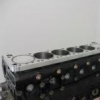Project Rb31dett. The Development Of My Open Deck Rb Engine And The Quest For More Torque!
Announcements
-
Similar Content
-
Latest Posts
-
By DatsunBanana · Posted
Trying to swap the rear subframe on my R34 and can't remove the L-shaped stay brackets between the front subframe mounts and the sill/chassis. I'm in the UK so rust is a problem. I've used loads of WD40 and then Tunap 103 for days beforehand. I backed off the bolts forward a bit, backward a bit repeatedly for ages to try and avoid snapping. They have all moved a few full turns. The one I've spent most time on has come loose and I can turn with fingers, and it will pull down and push up 2-3mm. But it won't come out. I can tighten it back up and loosen it off again repeatedly but it still won't come out. I assumed there's a captive nut inside but if that's broken loose then I can't understand why I can always tighten the bolt back up - I'd expect it to just spin both ways. Any ideas what's happening here? I can't visualise what's inside there to cause this. -
Cheers, yeah it was recently imported, is the actual Nissan not an Infiniti so will have to do some chasing around for parts. Any ideas if the side skirts from a Q50 would fit on the 400r?
-
I remember reading that there’s a power steering pump from a modern car—possibly a Mazda—that bolts directly onto an RB engine and lines up perfectly, making it a great option for HICAS removal. Unfortunately, I’ve forgotten which model it came from. Does anyone know what vehicle this pump is from? Any help would be appreciated.
-
Yeah, it is a sand it all job tried to fit the centres and they don't fit anymore. Powder coat doesn't seem to be to thick so that's a plus.
-
Looks close enough to fool a few people into thinking it was a genuine 400R I'm sure. Well done 👍
-




Recommended Posts
Create an account or sign in to comment
You need to be a member in order to leave a comment
Create an account
Sign up for a new account in our community. It's easy!
Register a new accountSign in
Already have an account? Sign in here.
Sign In Now